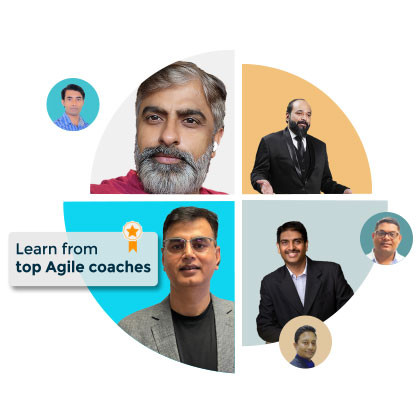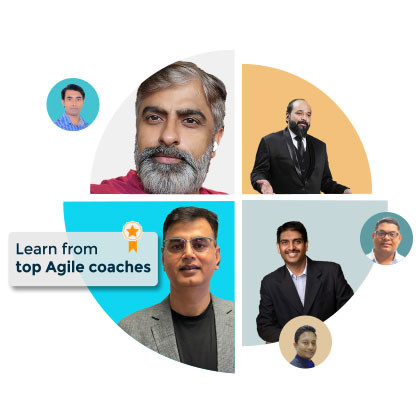Table of Contents
-
Introduction
-
The Connection Between SAFe® Core Competencies and BAVS Steps
-
Conclusion
The advent of advanced technologies like AI, big data, and cloud computing has fundamentally altered the competitive landscape, making the ability to innovate rapidly and deliver business solutions at speed a critical determinant of success. This ability, known as Business Agility, is what separates thriving enterprises from those that struggle to keep up.
For organizational leaders, the goal of enabling business agility is mission-critical. To achieve this, they must first understand and apply the principles of the SAFe® Business Agility Value Stream (BAVS). The BAVS provides a structured approach that helps organizations visualize the steps needed to move from identifying an opportunity to delivering customer value as quickly as possible.
The Connection Between SAFe® Core Competencies and BAVS Steps
The Business Agility Value Stream is more than just a series of steps—it's a framework that ties directly into the core competencies of SAFe® (Scaled Agile Framework®). Each step in the BAVS aligns with specific SAFe® competencies, ensuring that organizations have the necessary skills, knowledge, and behaviors to achieve business agility. Let’s explore how these competencies integrate with the BAVS.
1. Sense Opportunity
The first step in the BAVS is to sense new business opportunities. This is where the Organizational Agility competency comes into play. Successful organizations leverage market research, data analysis, and direct customer feedback to identify potential opportunities. Lean-thinking leaders often engage in "go and see" activities, where they observe customers in their natural environment to gather relevant, real-time insights that can lead to innovative solutions.
2. Fund MVP
Once an opportunity is identified, it's crucial to act quickly. The Lean Portfolio Management (LPM) competency supports this step by enabling agile funding decisions. Lean Budgeting, a key aspect of LPM, allows organizations to allocate resources swiftly to develop a Minimum Viable Product (MVP). This early version of a solution is critical for testing business hypotheses with minimal cost, ensuring that only viable ideas move forward.
3. Organize Around Value
To capitalize on the opportunity, organizations must align their teams and resources. The Team and Technical Agility and Organizational Agility competencies enable this step by fostering flexibility in how teams and Agile Release Trains (ARTs) are structured. Whether it involves reallocating existing teams or forming new ones, these competencies ensure that the organization is positioned to deliver value quickly.
Excel in Agile Product Management
Master the skills necessary to deliver innovative products in agile environments with our SAFe® Agile Product Management certification.
Join APM Course
4. Connect to Customer
Maintaining a direct connection with customers is vital throughout the development process. Agile Product Delivery, underpinned by Customer Centricity, ensures that the enterprise stays aligned with customer needs. By employing Design Thinking principles, teams can empathize with users and create solutions that meet real-world demands. This customer-focused approach is essential for delivering a product that truly resonates with the market.
5. Deliver MVP
With the MVP defined and teams organized, the next step is to deliver it. Here, Agile Product Delivery and Enterprise Solution Delivery come into focus. Agile practices like iterative and incremental development are key to managing the risks and uncertainties inherent in bringing a new product to market. These competencies optimize the delivery process, ensuring that the MVP is not just completed but also meets the necessary standards for customer validation.
6. Pivot or Persevere
After delivering the MVP, organizations must decide whether to continue development, pivot to a new direction, or abandon the initiative. This decision-making process is supported by Lean Portfolio Management, which provides the framework for evaluating the MVP's performance and making informed investment decisions. If the hypothesis is validated, additional funding is allocated to expand the solution; if not, resources are redirected to more promising opportunities.
7. Deliver Value Continuously
For initiatives that move beyond the MVP stage, continuous delivery of value is crucial. Agile Product Delivery ensures that development teams can release new features and enhancements regularly. In some cases, Enterprise Solution Delivery is also involved, particularly for large, complex solutions. By optimizing the Continuous Delivery Pipeline, these competencies help maintain a steady flow of value to customers.
Elevate Your Skills with Advanced Scrum Master
Take your Scrum Master role to the next level by learning to facilitate cross-team interactions and manage complex projects with our SASM course.
Register Today!
8. Learn and Adapt
The final step in the BAVS, "Learn and Adapt," is about continuous improvement. Continuous Learning Culture is the driving force behind this step, promoting an organizational mindset that prioritizes learning from both successes and failures. Regular inspect-and-adapt events provide the structure for ongoing refinement of processes and solutions, ensuring that the organization remains agile and responsive to new challenges.
Conclusion
The connection between SAFe® Core Competencies and the steps in the Business Agility Value Stream is integral to achieving true business agility. By aligning organizational capabilities with the BAVS, enterprises can respond rapidly to market opportunities, delivering innovative solutions that meet customer needs and drive business success. Lean-Agile leadership plays a crucial role in fostering this alignment, guiding the organization through the complexities of digital transformation and positioning it for long-term growth.
Understanding and implementing the BAVS is not just about staying competitive—it's about thriving in the Digital Age. The enterprises that build and refine their core competencies to support high-performing business agility value streams will be the ones that lead the market, delight their customers, and sustain their success over time.































































































